Project Jenny Photo Gallery
Project Jenny Overview
The objective of Project Jenny (also referred to within TMC as "Project 15")
was to build a flying platform for TV and radio broadcast for troop
entertainment and psy warfare. The project began in 1964, after several false starts, under the leadership
of George Dixon, who had been acting as VP Sales for TMC (Dixon later became
Executive VP in 1966). Dixon had been a Naval aviator and had retired, but
was called back to active service to oversee Project Jenny. Dixon was
quite an interesting character, to say the least, and it was no doubt his
forceful personality that brought Project Jenny to life. John Showalter
shared several amusing stories about the development of Jenny, which I'll add to
this site once I've transcribed the notes of my long conversation with him!
Jenny equipment included a GPT-10K, a 10KW LF transmitter, a trailing-wire antenna, a 3.5KW television transmitter, and essentially a
complete TV studio. The first aircraft, Blue Eagle I (BUNO 131627),
was a "radio-only" aircraft, whose initial configuration and
development was overseen by Dixon at Andrews Air Force Base. Construction
was performed by enlisted personnel, and at least one technician (John
Showalter) from Multronics, Inc. Multronics designed and built much of the
equipment on this aircraft, including the transmit multicoupler, trailing-wire
antenna system, and attached HF antennas. TMC Power Systems built a
special diesel generator that powered the equipment aboard the aircraft.
It was located near the rear of the aircraft behind a "sound proof"
partition (evidently the aircraft was incredibly noisy when all of the equipment
was running!). The company also built a TV broadcast transmitter under
contract to TMC. This equipment can be seen in the photo gallery
below. Blue Eagle I is shown below:
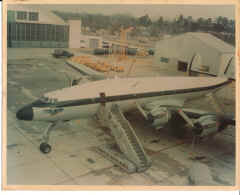
This aircraft was equipped with three antenna systems:
- HF antenna: There are three booms sticking out of the top of the
fuselage: These are insulated from the fuselage and form part of an
L-shaped radiator. Wires passed through these masts, through pulleys,
then back to the empennage. There are insulators in each line between
the boom and the tail, and there were winches (Sears boat winches!) inside
the aircraft that allowed the antenna length to be tuned.
- An HF dipole, very difficult to see in the photos, that stretched from the
outer portion of each wing back to the fuselage just forward of the
tail. These wire antennas passed into a special tuner in the rear of
the aircraft that could be configured to drive the two antennas as a dipole,
or as two monopoles.
- The trailing wire antenna. This antenna was deployed in flight (or
using balloons on the ground--see below). In flight there was
initially a torpedo-shaped bronze weight at the end of the wire, later
replaced with plexi-glass weights. This antenna was deployed using a
winch (shown in photos below) and coupled to an LF and an HF/MF transmitter
via a special transmit antenna coupler (Multronics-developed TMC ATMC-1)
that allowed the two transmitters to share the antenna.
Blue Eagle I must have been incredibly entertaining to fly. Apparently
there is a commercial weight limit for the Connie, and a much higher Military
weight limit. Blue Eagle was heavier than the full Military weight limit
by quite a bit, requiring a very long takeoff roll and a very flat trajectory
once the aircraft left the ground. Landings were similarly
"interesting".
Blue Eagle II and III (BUNO's 131611 and 131429) were later assigned to the
development effort to test various TV antenna configurations. I believe
the photo immediately below may be one of these aircraft, though the antennas
shown in the photo were not those that eventually were deployed in
service. These later aircraft appear to have had some TMC equipment,
including a TMC GPT-10K HF broadcast transmitter and HF communications
gear. The television equipment was probably built by RCA, but evidence
(the photos below from the TMC photo archive) suggests that the equipment racks
containing communications and TV monitoring gear were probably integrated and
cabled at TMC in Mamaroneck.
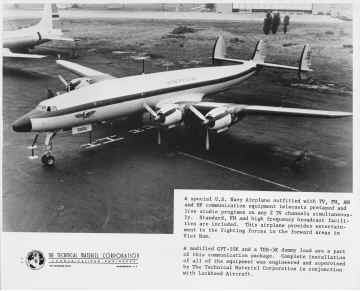
Eventually there were 6 Blue Eagle aircraft, flown by the VXN-8
squadron. There is lots of interesting information about the squadron on the Blue
Eagle website. Below is a scan of the unit shoulder patch:
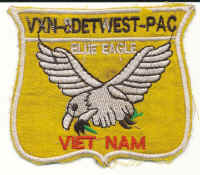
Project Jenny ended in the late 60's but was replaced by Commando Solo, a
flying Psyops station aboard an EC-130J. See:
http://xbradtc.wordpress.com/2011/04/05/commando-solo/
http://www.hmdb.org/marker.asp?marker=12542
http://www.acus.org/content/interior-ec-130j-commando-solo-march-2003
A later, and perhaps current, incarnation is Coronet Solo:
http://www.psywarrior.com/ec130.html
Crew Stories
TMC Involvement
In addition to a large number of photographs in the gallery below, I also unearthed a couple of
interesting documents:
I am greatly indebted to John and Grant Showalter, who took time to discuss
Project Jenny with me at length and who loaned me a number of unique documents
about the project. If you have more information about Jenny that you can
share, please email me at  .
.
Aircraft Photos
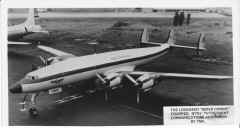
|
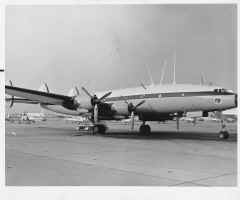 |
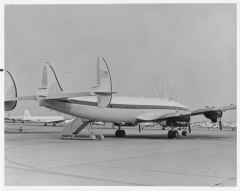 |
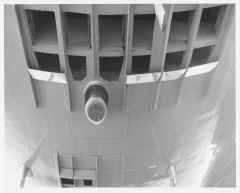 |
| This photo shows the television equipped aircraft.
Note special TV antennas mounted below the fuselage. |
Back labeled: "US Naval Air
Station, Patuxent River, MD Photographic Laboratory. Official US
Navy Photograph" This is almost certainly Blue Eagle I, the prototype
aircraft. |
Back labeled: "US Naval Air
Station, Patuxent River, MD Photographic Laboratory. Official US
Navy Photograph" This is also, most likely, Blue Eagle I. |
Info about this feature on the underside of
the fuselage is in my notes: I'll update it soon! |
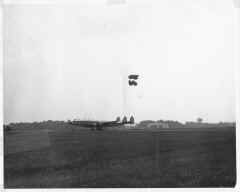 |
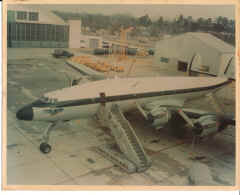 |
|
|
| This photo shows the balloon antenna system
deployed. This was a backup plan in case broadcast from the plane
while aloft turned out to be impossible. The trailing wire antenna
passed below a clamp, then up to the balloons that took the antenna
aloft. Just barely visible in forward of the aircraft is an HF
vertical antenna that could be deployed on the ground. |
Blue Eagle I. Note the insignia place
directly below the fuselage. There are photos on the web relating to
the Blue Eagle squadron that show this aircraft with "627"(last
3 digits of the BUNO) painted on the fuselage near the nose. |
|
|
TMC Factory Photos of Jenny "Units"
Below are a bunch of photographs of rack units evidently taken at TMC while
they were in manufacture. Most are numbered, and I've referred to the rack
number/letter designation where I have it.
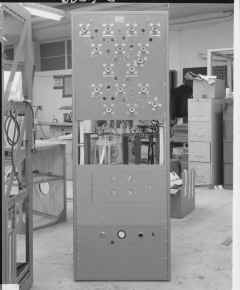 |
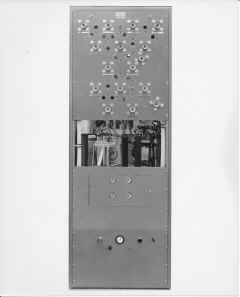 |
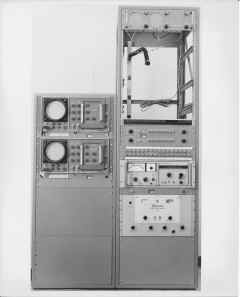 |
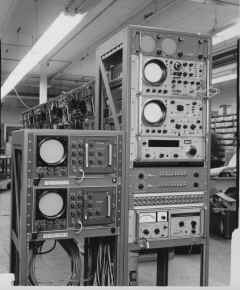 |
| 6837-5
Unit 7A I believe this unit may have been a manual coaxial patch
panel. A similar item is described in a Multronics manual supplied
to me by John Showalter, and it is capable of connecting 3 transmitters to
several antennas or a dummy load. |
686.5-5 Unit
11 |
683.1-2 Unit
11 |
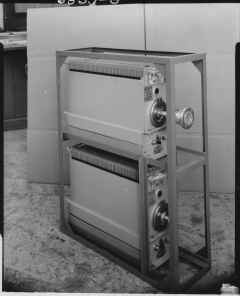 |
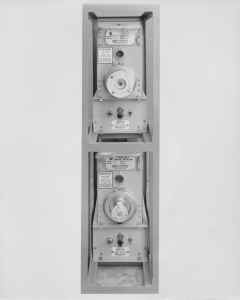 |
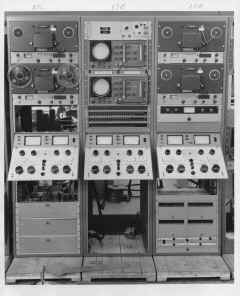 |
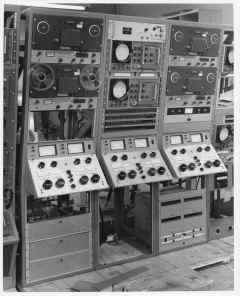 |
| Unit 12B VHF Dummy
Loads |
683.1-7 Unit
12B End View |
681.18-7
Units 13 C, B, A |
681.18-8
Units 13 |
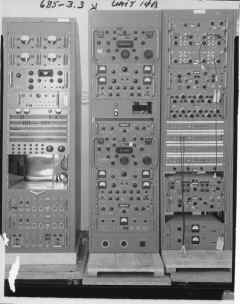 |
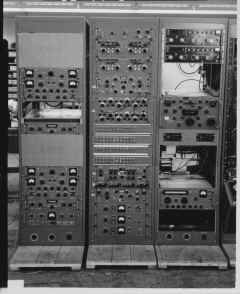 |
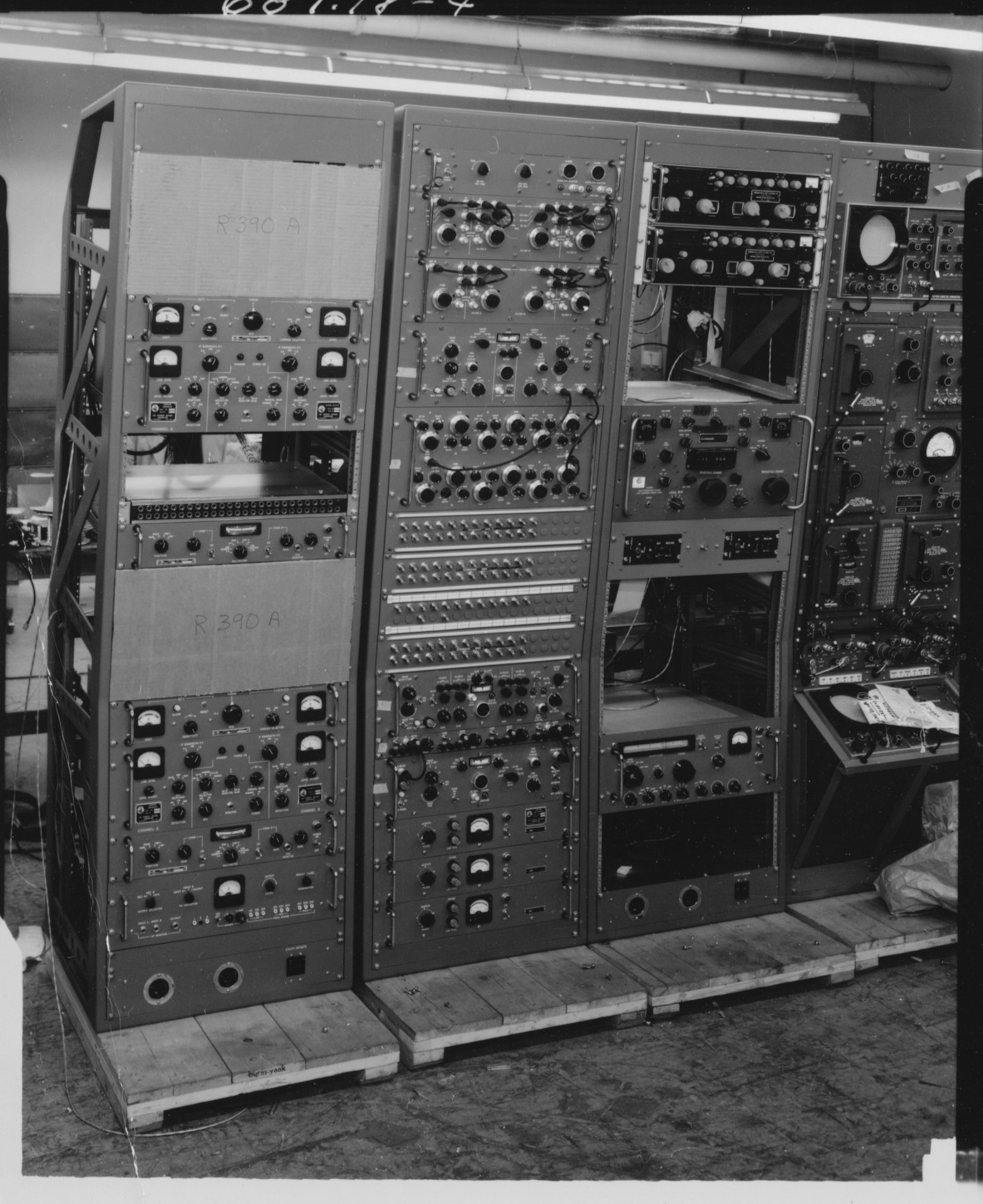 |
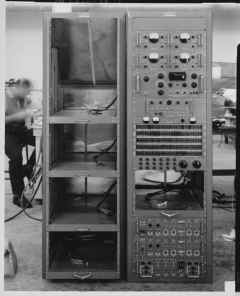 |
| 685-3.3 Unit
14A (in center of photo) |
681.18-3
Units 14A (left) and 16D,E (right) |
681.18-4
Units 14A (left) and 16D,E (right) |
681.18-1 Units 14
B and C while under construction |
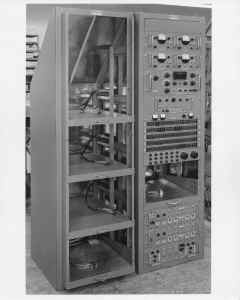 |
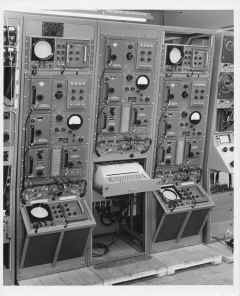 |
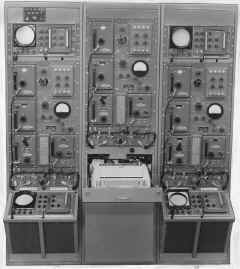 |
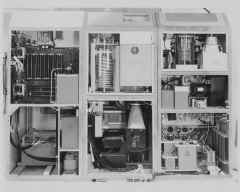 |
| 681.18-2
Units 14B and C |
681.18-6
Units 16 A,B,C These appear to be MIL VHF radios |
No number.
This photo of Units 16 A,B,C was used in the 1968 Annual Report
under "Avionics Installations" |
681.29-8. I
believe this is the rear view of the GPT-10K modified for use in the Jenny
Project. Note the sloping top panels. Also, the photo was
stuck in a folder labeled "Blue Eagle". |
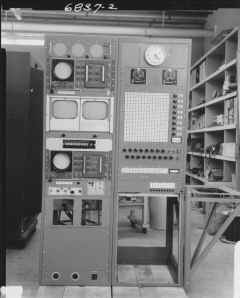 |
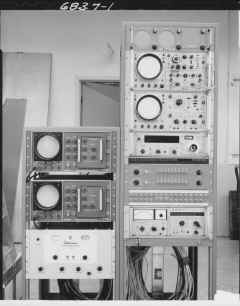 |
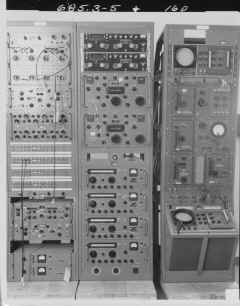 |
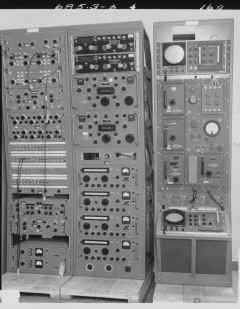 |
| 683.7-2 Unit
17 front view at TMC plant. |
683.7-1 Yet
another view of unit 11. |
685.3-5.
Units 16d, 16e, and 16a. |
685.3-6.
Units 16d, 16e, and 16a. |
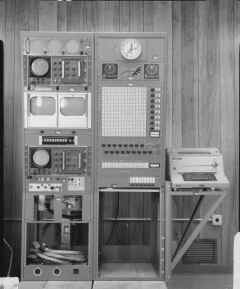 |
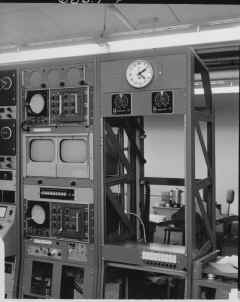 |
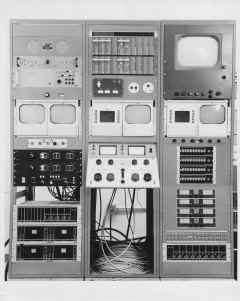 |
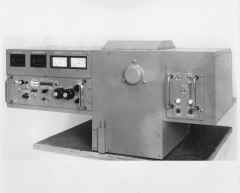 |
| 685.3-1 Unit
17 |
681.18-10
Unit 17 |
686.5-1 Unit
(unknown) |
685.3-8 Back of
photo says "5", but is hard to read. This unit
appears to be the VLF antenna tuner and trailing-wire antenna winch. |
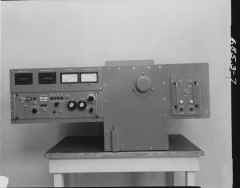 |
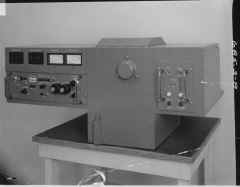 |
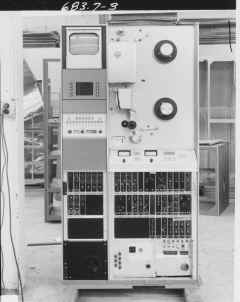 |
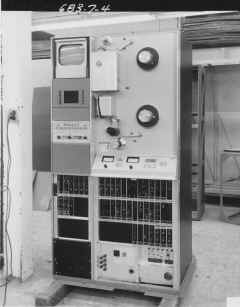 |
| 685.3-7.
Another view of the tuner/reel. |
685.3-8.
Antenna tuner/reel. |
683.7-3. VTR
front view. |
683.7-4 VTR
front/right view. |
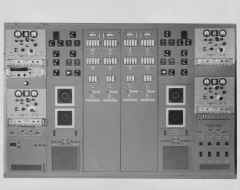 |
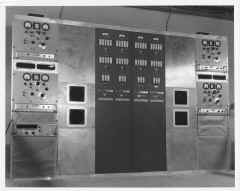 |
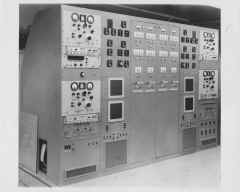 |
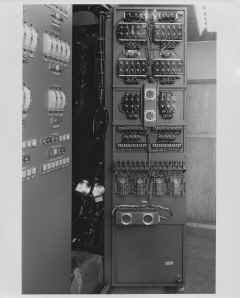 |
| 6811.5-1 TMC
SPT-3KVHF Transmitter. This unit provided CW, AM, FM, and television
transmission between 30 and 350 Mc. Evidently, it could provide 4
simultaneous 2KW outputs in pairs on two bands. This transmitter was
designed and built by Multronics, Inc, under contract to TMC. |
No photo number,
but clearly the SPT-3KVHF shown in 6811.5-1 while under construction. |
6811.5-2.
Overall view of SPT-3KVHF transmitter. |
687.5-5 View
behind one of the two switching panels of the SPB-3KVHF. |
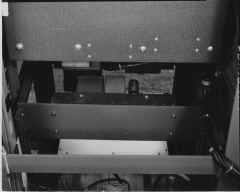 |
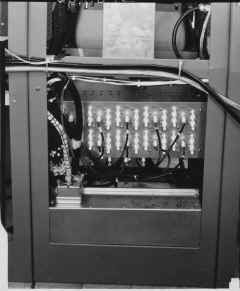 |
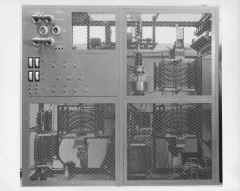 |
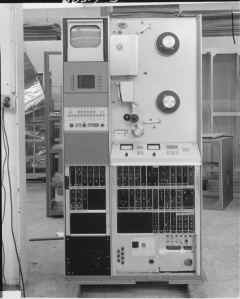 |
| 681.18-11 16 Rear |
681.18-12 16 Rear |
686.5-4 Unit 3.
This is the ATMC transmitter multicoupler that allows an MF and an LF
transmitter to operate simultaneously over the trailing wire
antenna. The unit was designed an built by Multronics under contract
to TMC. |
683.7-3
Video Tape Player |
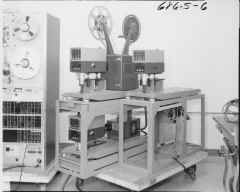 |
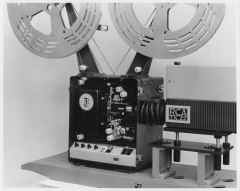 |
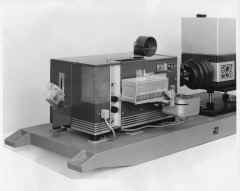 |
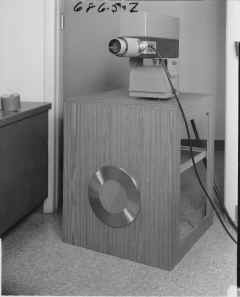 |
| 686.5-6 Kinescope
equipment, also referred to as "camera chain" Bottom camer
is attached to a slide projector. |
No
photo number, but both of these photos in folder titled "Camera
Chain" |
686.5-2 TV
camera, not clear what purpose.. see below in aircraft interior photos |
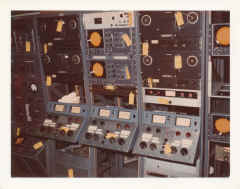 |
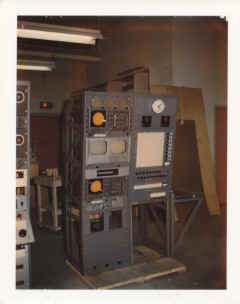 |
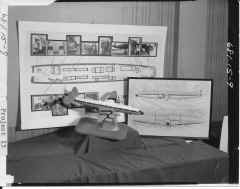 |
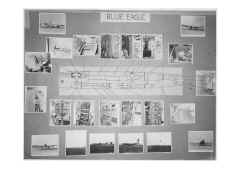 |
| No number, but
units 13.
Photo has written on back: "Both reel & cartridge tape recorders
and all radio receiver information is processed here for presentation to
central control console. Companders provide high quality
processing of audio information." |
No number, but
clearly unit 17. Photo has written on back: "Command control console.
Right rack provides complete control of all transmitted information as
well as monitor of all receive channels. Spectrum analyzers &
video picture monitors provide visual presentation." |
681.15-9
Aircraft model. Sadly, resolution is not quite high enough to read
the diagram on the wall!! The aircraft is pretty clearly Blue Eagle
I, but the equipment shown is fairly different from the photo to the
right. Any help on figuring out the differences would be gratefully
accepted! |
This photo appears to show
Blue Eagle I, configured quite differently from the plane shown to the
left. From discussions with John Showalter, I believe this was the
initial configuration of BE-I, with a TMC diesel generator, a GPT-10K, a
GPT-10KLF, a sound-proofed studio (just aft the cockpit), the trailing
wire antenna system, the dipole antenna coupler (aft), and a bunch of HF
comm's gear, which Dixon, a ham, evidently used quite a bit during test
flights! |
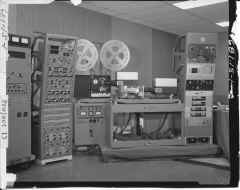 |
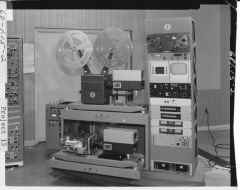 |
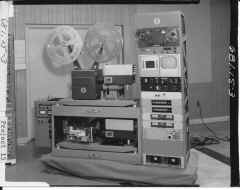 |
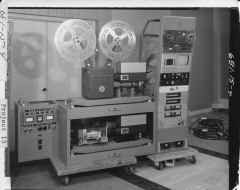 |
| 681-15.1
Camera chain photo with other racks. |
681.15-2 |
681.15-3 |
681.15-4 |
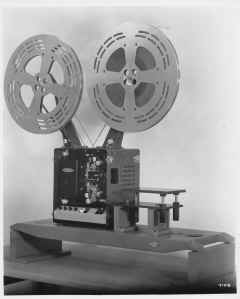 |
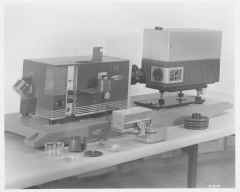 |
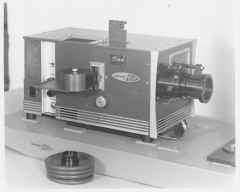 |
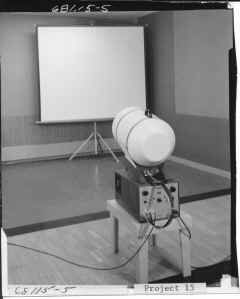 |
| Not labeled, but
obviously the film projector from the "camera chain". |
These
two shots show closeups of the slide projector in the "camera
chain". |
681.15-5.
This appears to be a TV projection system. Not clear what it was
used for. |
Photos of Aircraft Interior
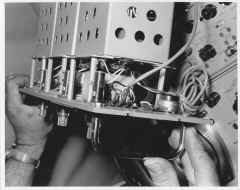 |
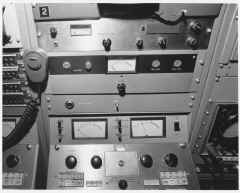 |
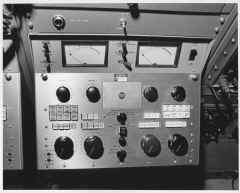 |
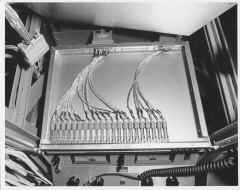 |
| C706.4-A36 Speaker unit
at top of Unit 11 |
C706.4-A24 Lower
center portion of Unit 13A |
C706.4-A30 Patch panel, first
of 4 layers in Unit 13B |
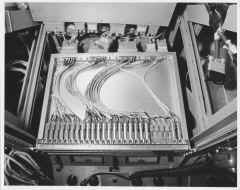 |
 |
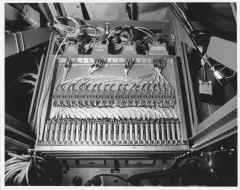 |
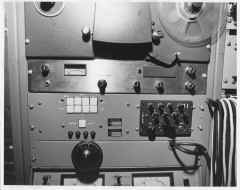 |
| C706.4-A29 2nd patch panel in
13B |
C706.4-A28 3rd patch panel |
C706.4-A27 4th patch panel |
C706.4-A25 A closeup of unit
13C |
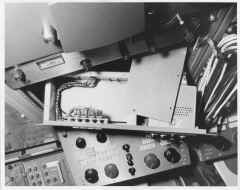 |
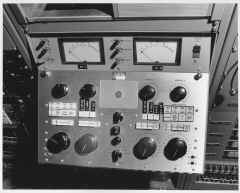 |
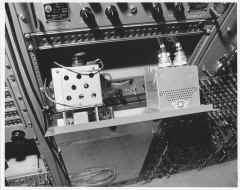 |
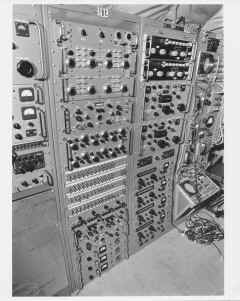 |
| C706.4-A26 Closeup of TMC-built
unit directly above tape controls in Unit 13C |
C706.4-A9 Closeup of controls
in Unit 13 C |
C706.4-A3 Closeup of portion
of Unit 14A |
C706.4-A35 Units 16 E,D,C |
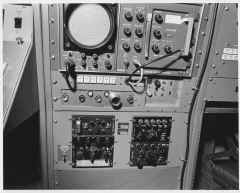 |
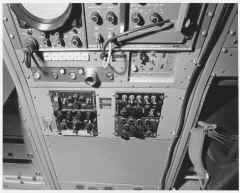 |
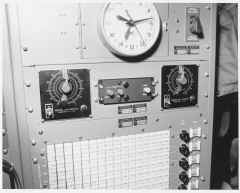 |
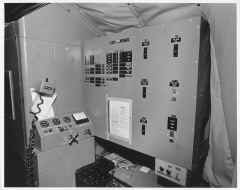 |
| C706.4-A8 Closeup of
Unit 17 |
C706.4-A4 Another closeup of
Unit 17 |
C706.4-A5 Closeup of Unit 17
upper right |
C706.4-A2 AC
Distribution panel (right), and perhaps trailing-wire winch left. |
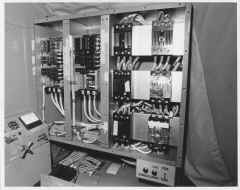 |
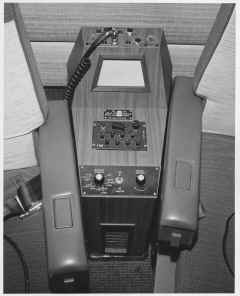 |
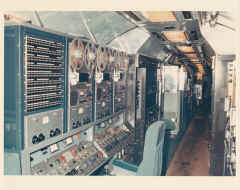 |
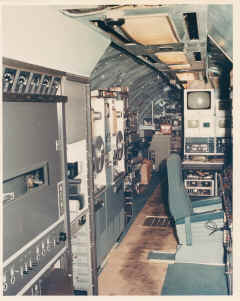 |
| C706.4-A31 AC distribution
panel with front panel removed |
C706.4-B23 Between-seats
console. |
No number. Aircraft
interior shot #1. |
No number. Aircraft
interior shot #2. |
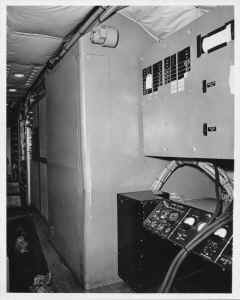 |
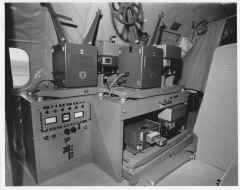 |
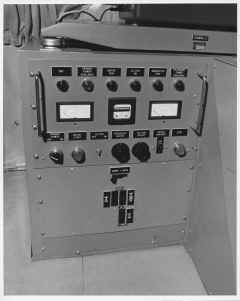 |
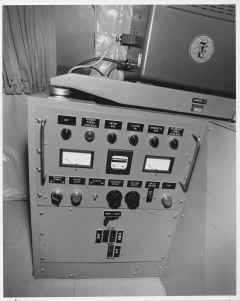 |
| No number. Aircraft
interior shot #3. |
C706.4-A17. Camera chain
overall. |
C706.4-A22. Camera chain
panel closeup. |
C706.4-A13. Another
panel closeup. |
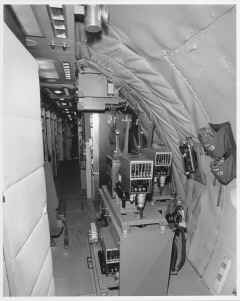 |
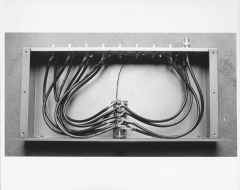 |
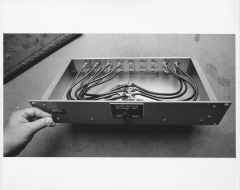 |
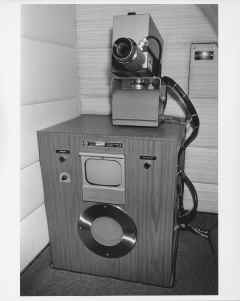 |
| C706.4-A18. View of
camera chain from rear(?) of aircraft. |
C706.4-A10. Sync switch
bottom |
C706.4-A11. Sync switch
overall. |
C706.4-B25. TV camera
and console. This unit was used in conjunction with the seats and
control consoles shown in photo C706.4-B23, forming the airborne TV
studio. The camera could be controlled from the console, and the
outgoing image could be viewed on the monitor. |
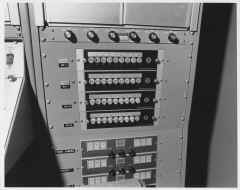 |
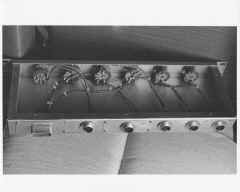 |
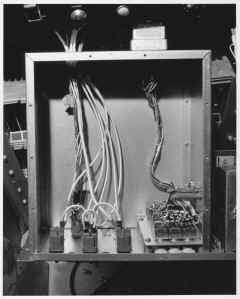 |
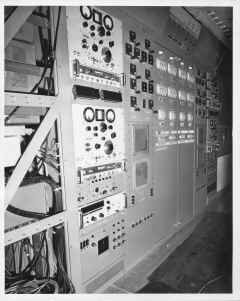 |
| C706.4-A20 Unknown unit. |
C706.4-C1 Switch unit inside
the unknown unit of C706.4-A20 |
C706.4-A19. Unknown
switch unit. |
No photo number, but this is the same
SPT-3KVHF transmitter shown above in the "units" gallery. |
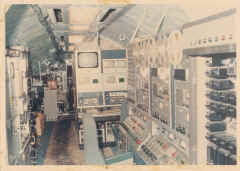 |
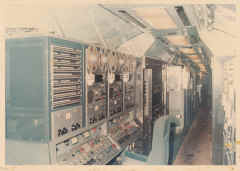 |
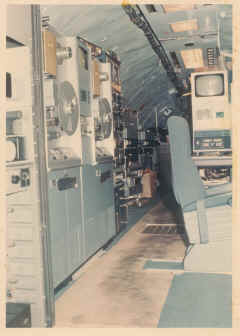 |
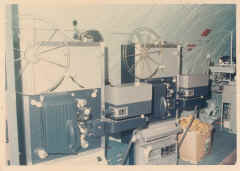 |
| These two photos
show Units 13A,B,C with audio tapes installed. One view is aft, one
for'ard, but I'm not sure which. |
This interior photo shows a
pair of huge video tape players. |
This photo shows a couple of film-to-video
systems. These units are just barely visible behind the VTR's in the
photo to the left. |
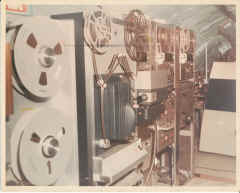 |
|
|
|
| No number. This photo is
labeled on the back: "TV video tape recorder; TV (missing) mm film
projector; Audio tape recorders." |
|
|
|
| |
|
|
|

![]() .
.